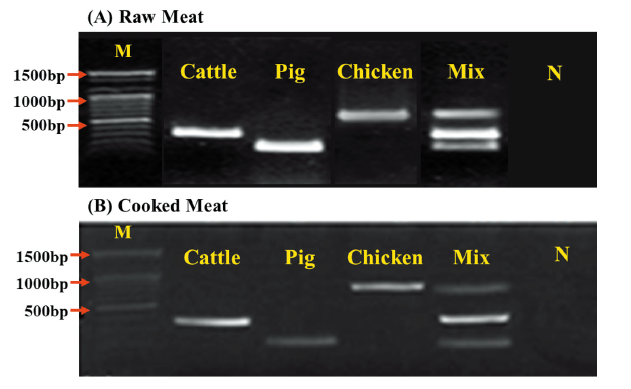Abstract
A processed meat product is a food that changes the character or shape of meat, and it is difficult to identify the raw meat because the original shape is destroyed. False record and disguised sales of raw meat can negatively affect not only the safety of consumers but also the income of producers. Therefore, this study was conducted to establish a multiplex PCR (polymerase chain reaction) method to simultaneously identify cattle (
Figures & Tables

Fig. 1. Agarose gel electrophoresis results of species-specific PCR for raw meat and cooked meat. M, 100 bp ladder marker; Mix, Mixed DNA; N, negative control.


